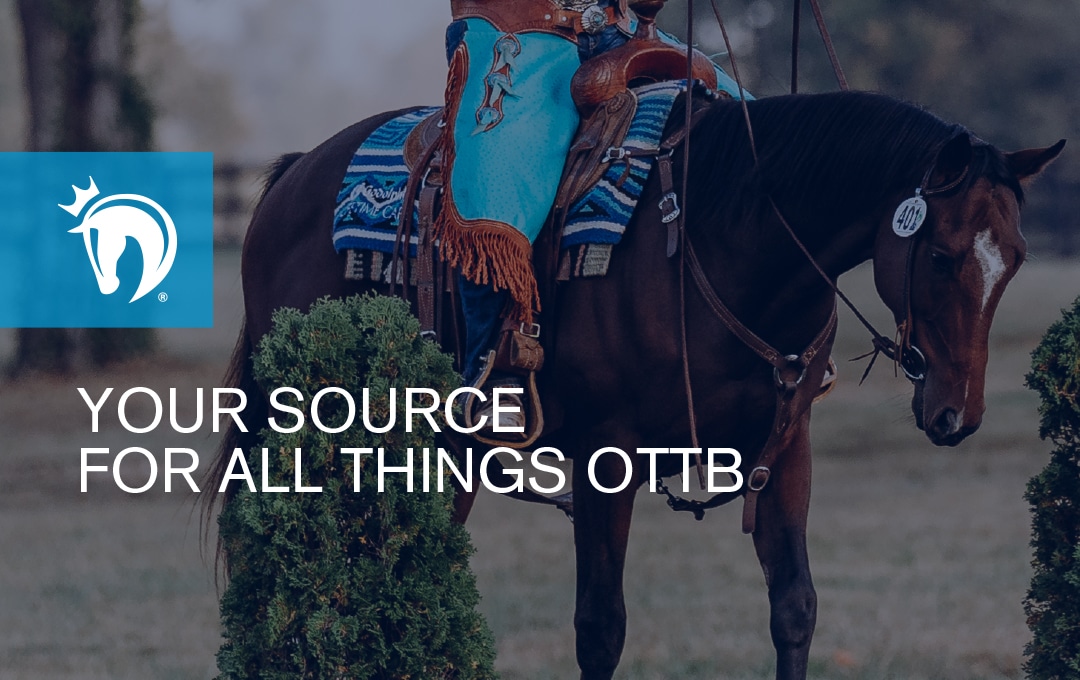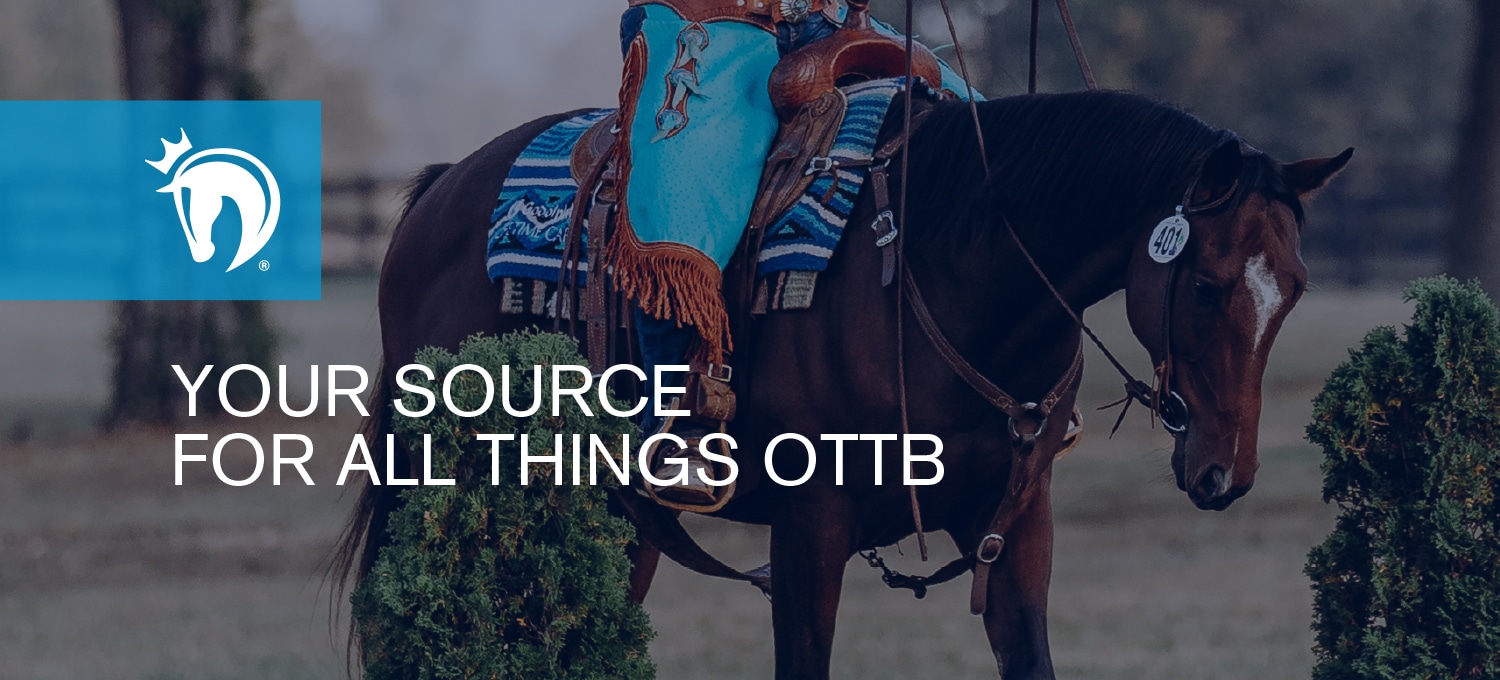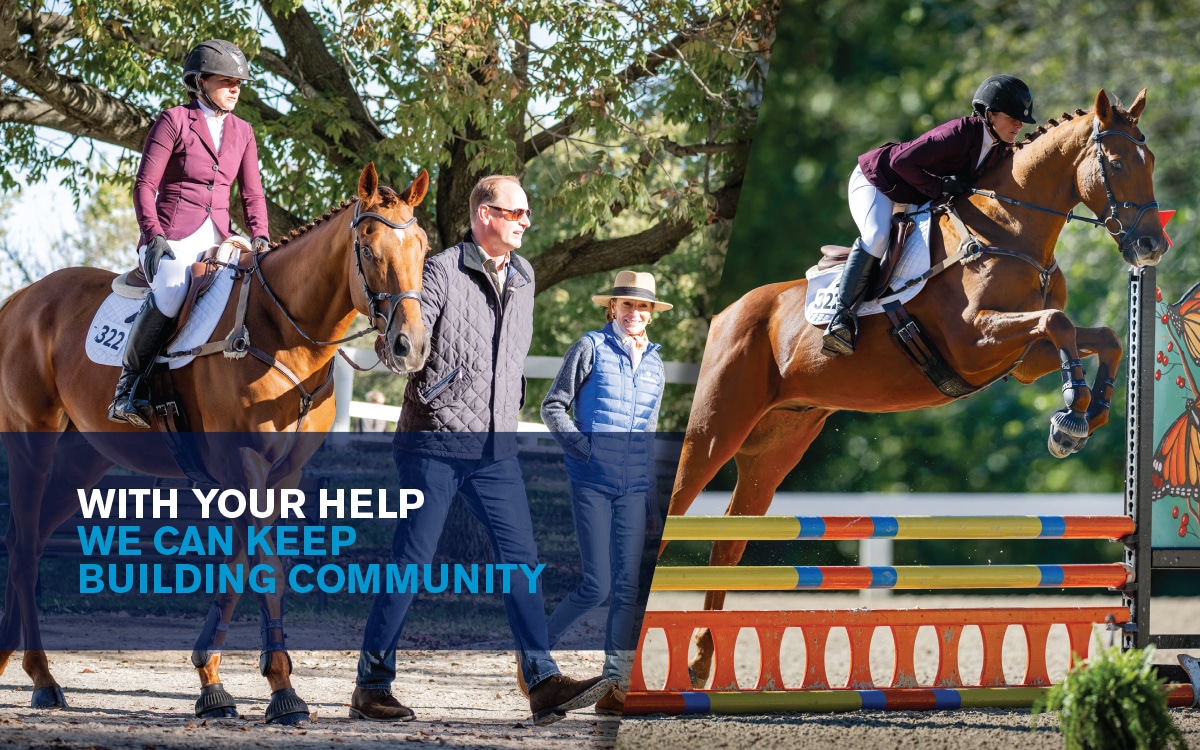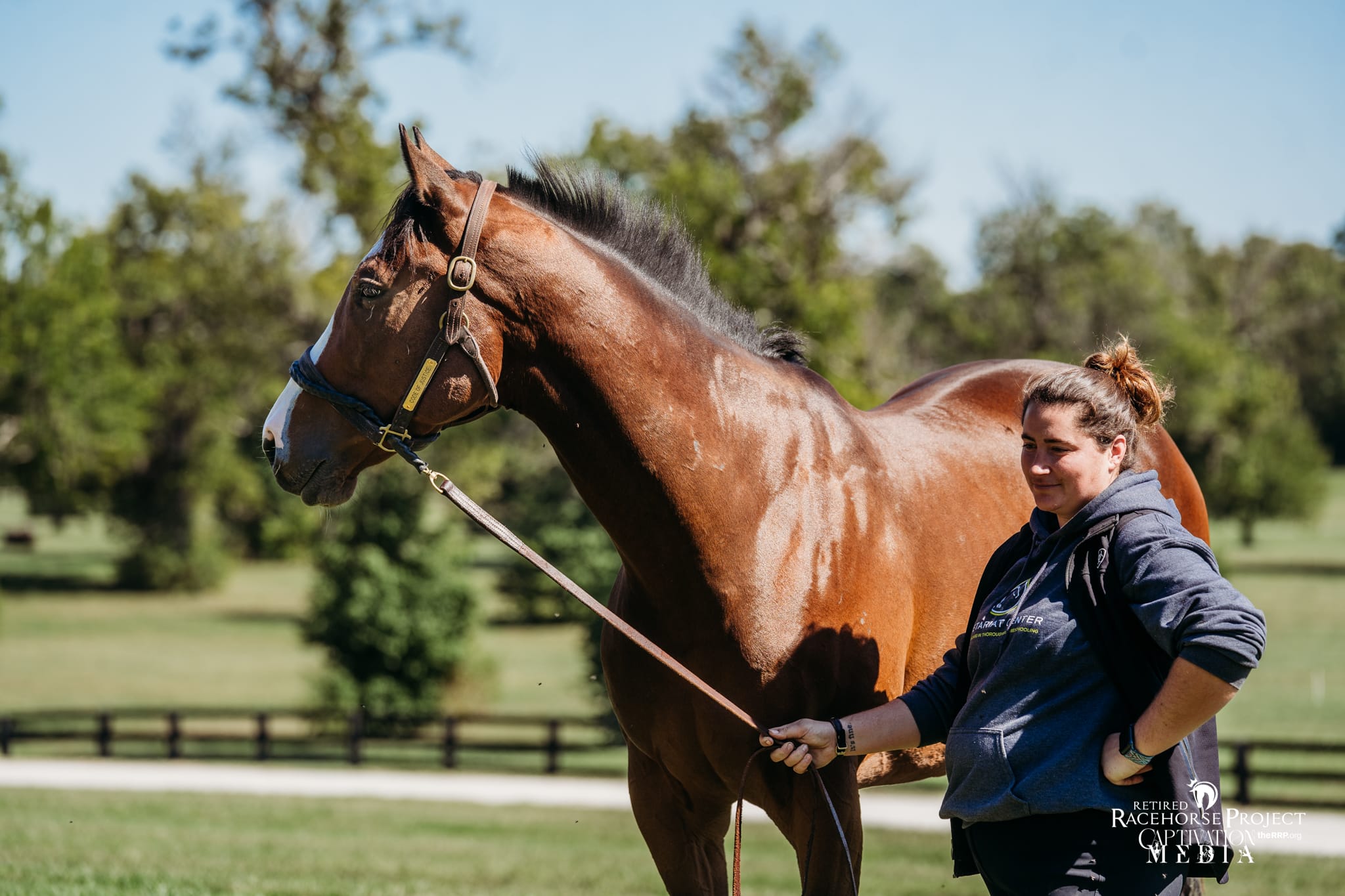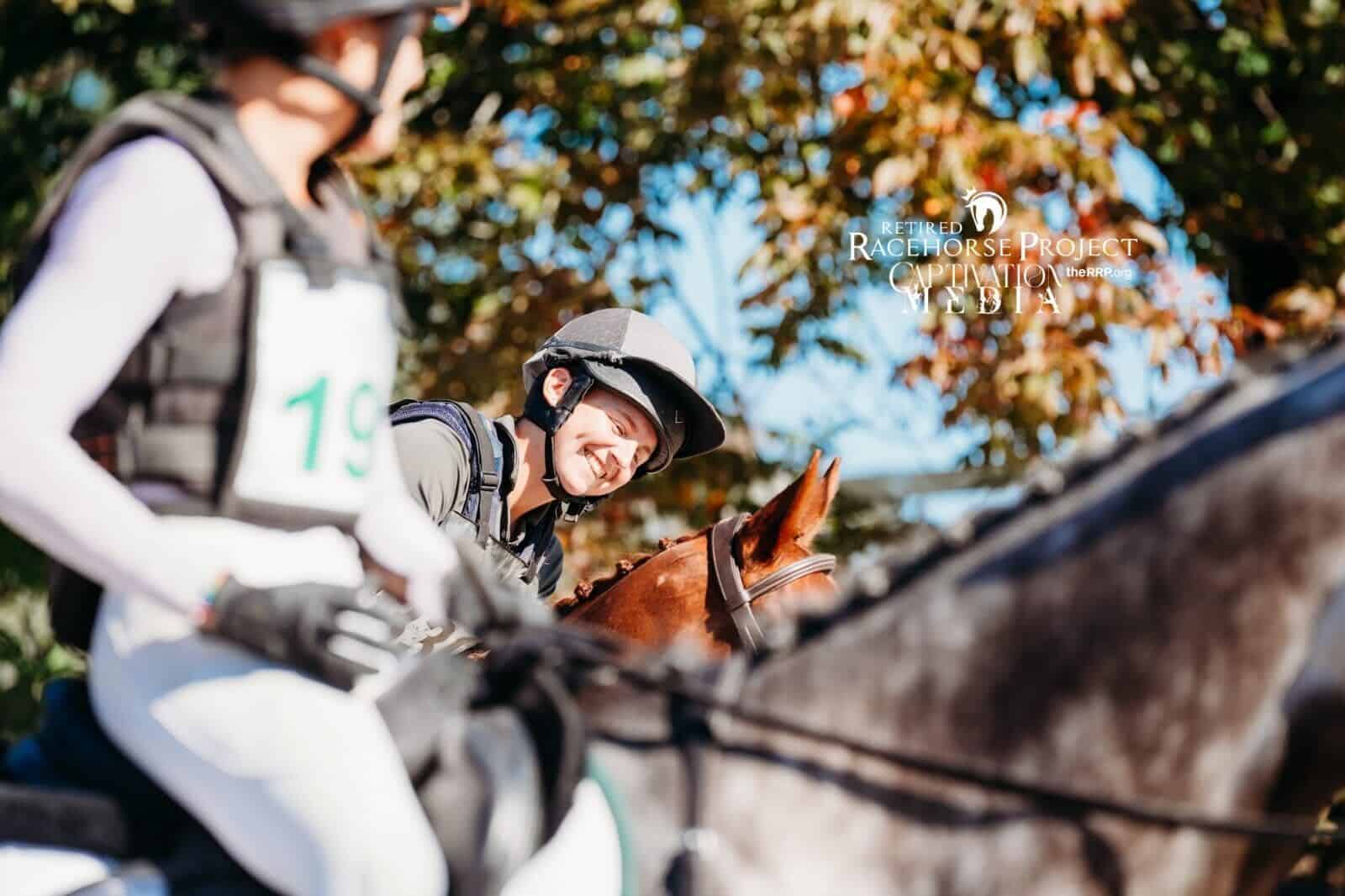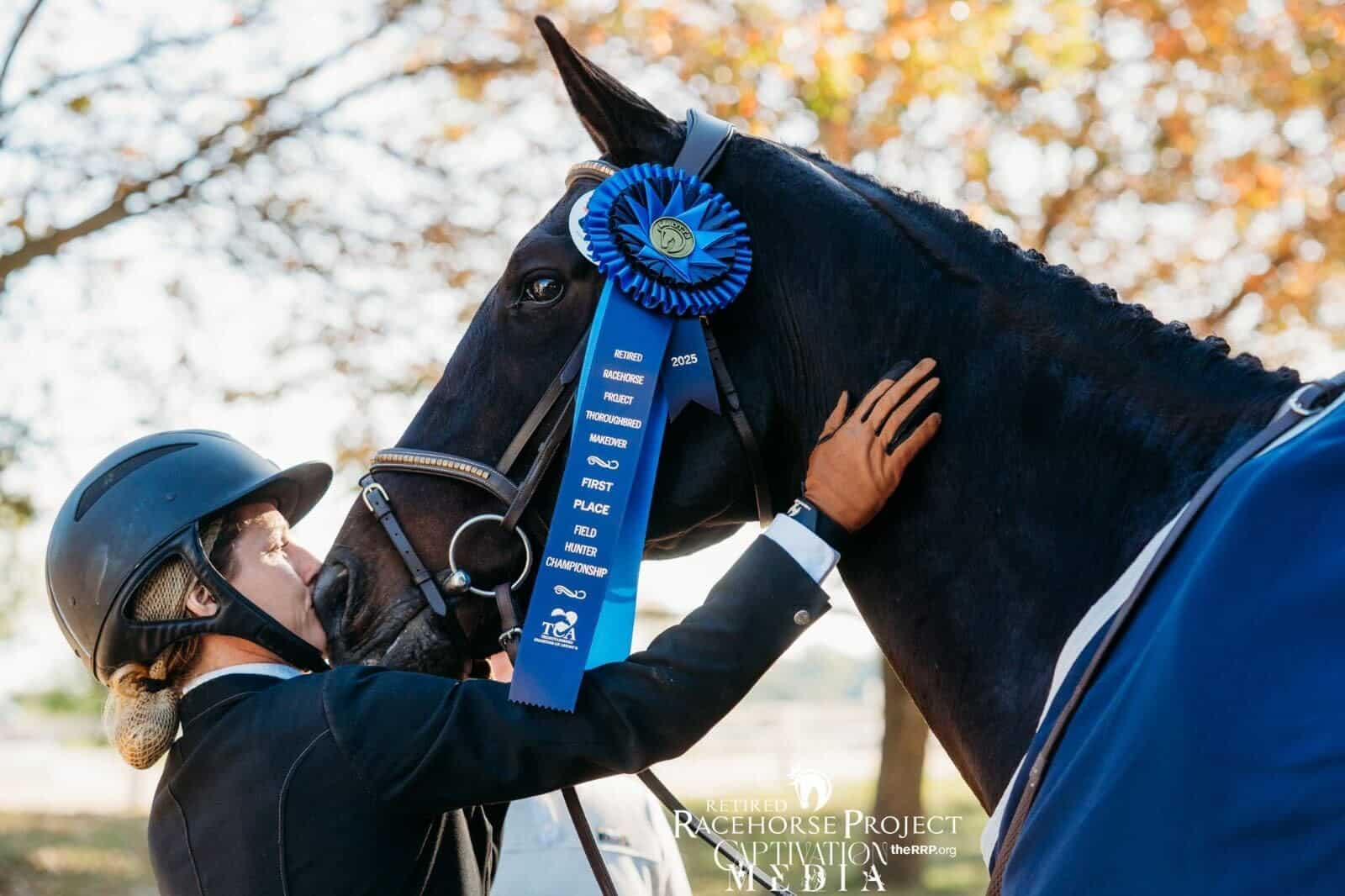Meet the Thoroughbred Makeover Class of 2024
August 26, 2024The 2024 Thoroughbred Makeover and National Symposium, presented by Thoroughbred Charities of America, is less than two months away, and final entry is complete! View the full class at TheRRP.org/entries, and read on to take a deep dive into the trends and statistics we’ve learned from getting to know this class of recently-retired racehorses.
The Retired Racehorse Project (RRP) is uniquely positioned as the only organization in aftercare that works across all facets of the industry, including both accredited and unaccredited adoption organizations, listing agents, and for-profit trainers and resellers. The data we capture annually through the Thoroughbred Makeover offers a closer look at how horses are moving into second careers and may provide the most comprehensive picture of the state of Thoroughbred aftercare available. While data only comes from the 447 horses who were registered for this year’s competition, it still provides valuable insight into the Thoroughbred aftercare industry.
Out of the 447 horses registered, 353 made final entry. We consider every horse registered a Makeover graduate, so let’s take a closer look at that class of 447 registrants!
Sales & Acquisition
The Thoroughbred Makeover gives us a great annual cross-section of the industry and magnifies how retiring racehorses are finding their routes into their next careers. One of our key metrics of success is the value of horses retiring from racing: as this figure increased, we hope more connections will realize that their horses have value in retiring sound and that a second career is as worthy of celebration as the first.
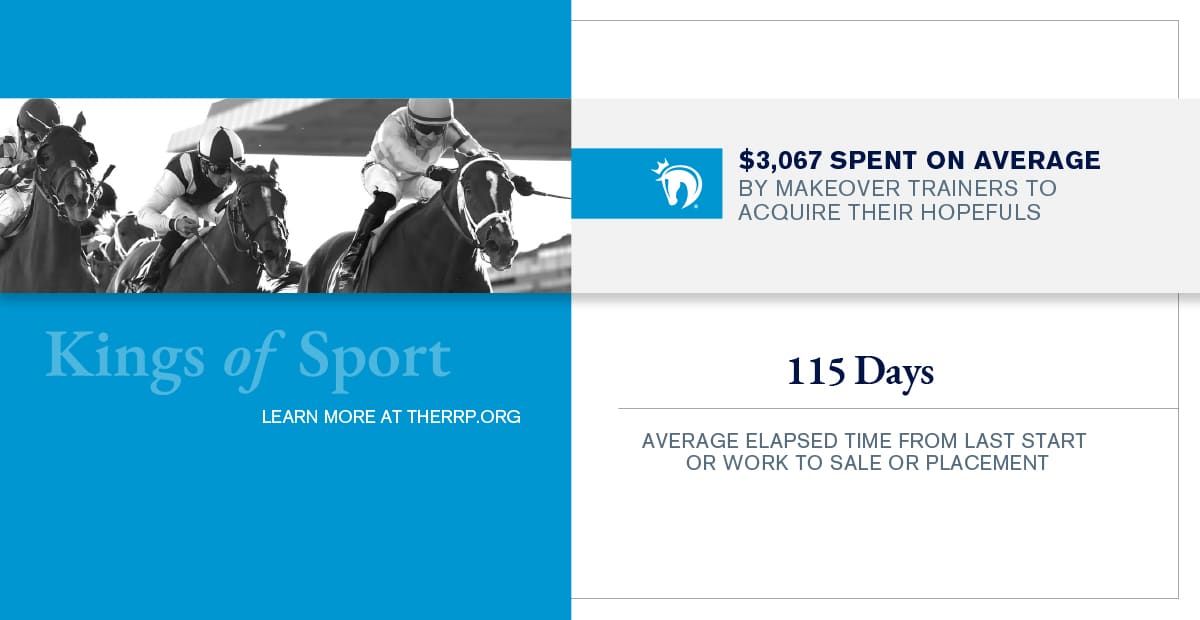
The value of horses retiring from racing has been generally on the rise since we started tracking this data in 2015: this year, prices are holding steady at $3,067 spent on average by trainers to acquire their Makeover hopefuls. This includes direct purchase as well as adoption. Of note, 109 horses, representing 24% of the registered class, were acquired in what we consider a non-cash transaction, representing a nominal fee or non-cash fee to memorialize the transfer of ownership.
On average, the elapsed time from last start or timed work to acquisition for the Thoroughbred Makeover is 115 days. This period of time varies depending on the route horses took from the track to their Makeover homes:
- Aftercare facility: 150 days (about the same as 152 days in 2023)
- Direct from racing connections: 95 days (up slightly from 84 days in 2023)
- Resellers – defined as any owner between racing connections and Makeover trainer – 129 days (down considerably from 175 days in 2023)
These statistics do not include horses in the Former Broodmare division, whose time elapsed from last start or timed work may have been years.
How Horses Are Acquired
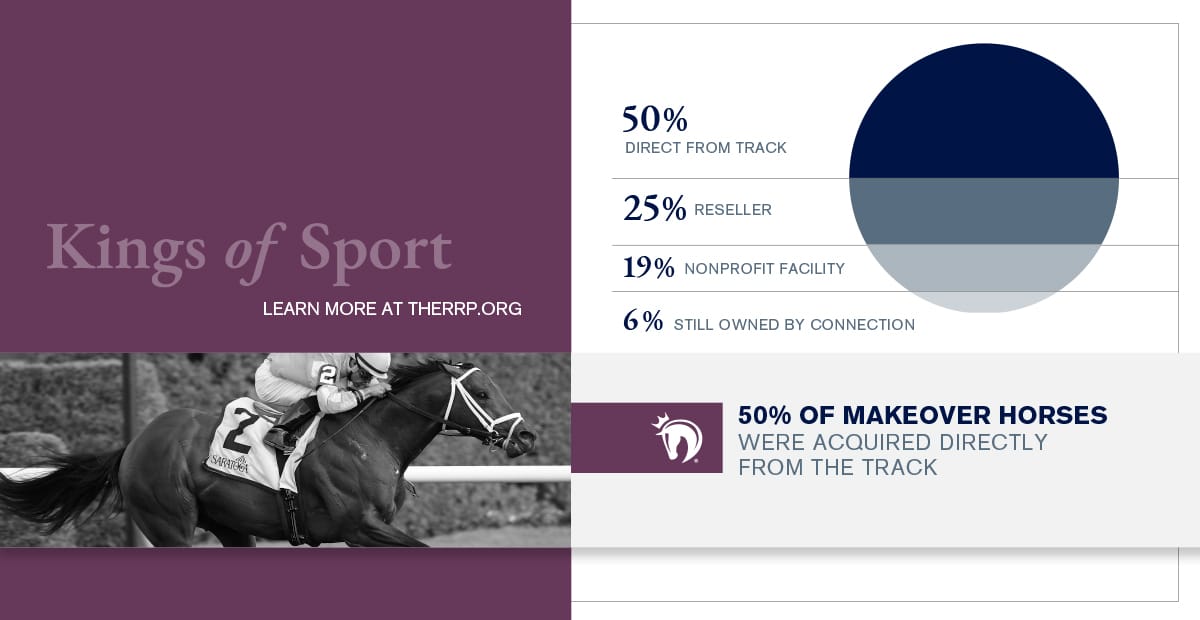
Similar to previous years, about 50% of our Makeover horses are acquired directly from their racing connections, either through a listing agent, organization or service, or through personal contacts and networks. Resellers, which we define as any owner between the track and the Makeover trainer, represent another quarter of the population. Non-profit aftercare facilities provided another 83 horses or 19% of the total registered class, and 31 horses are still owned by their racing connections.
Last Track
Taking a look at the last track where horses raced or worked provides some insight into where horses are ending their careers, where connections are making the decision to retire a horse, and where established track and retirement programs may be assisting connections in the transition. Here are the top ten last tracks with total number of retiring Makeover-registered horses:
- Penn National: 23
- Laurel Park: 22
- Charles Town and Parx Racing: 21
- Finger Lakes: 19
- Gulfstream Park, Horseshoe Indianapolis, Mountaineer Casino Racetrack & Resort, and Turfway Park: 17
- Delaware Park: 15
Racing (& Breeding) Careers
The average racing career for a Makeover registrant remains similar to recent years, with the average earnings trending somewhat higher. This statistic may indicate that horses are retiring from higher levels of racing, before they drop down the levels and run longer careers, increasing their chances of incurring injury that may limit their second career prospects. Note that 31 horses, or 7% of the registered class, only ever made a timed work and did not race.

The majority of Makeover registrants made less than 20 starts, with over a third of the total class making less than 10 starts. This data suggests that connections are choosing to retire horses when it’s evident that the horse has little talent or desire to keep running, rather than dropping levels to continue a career.
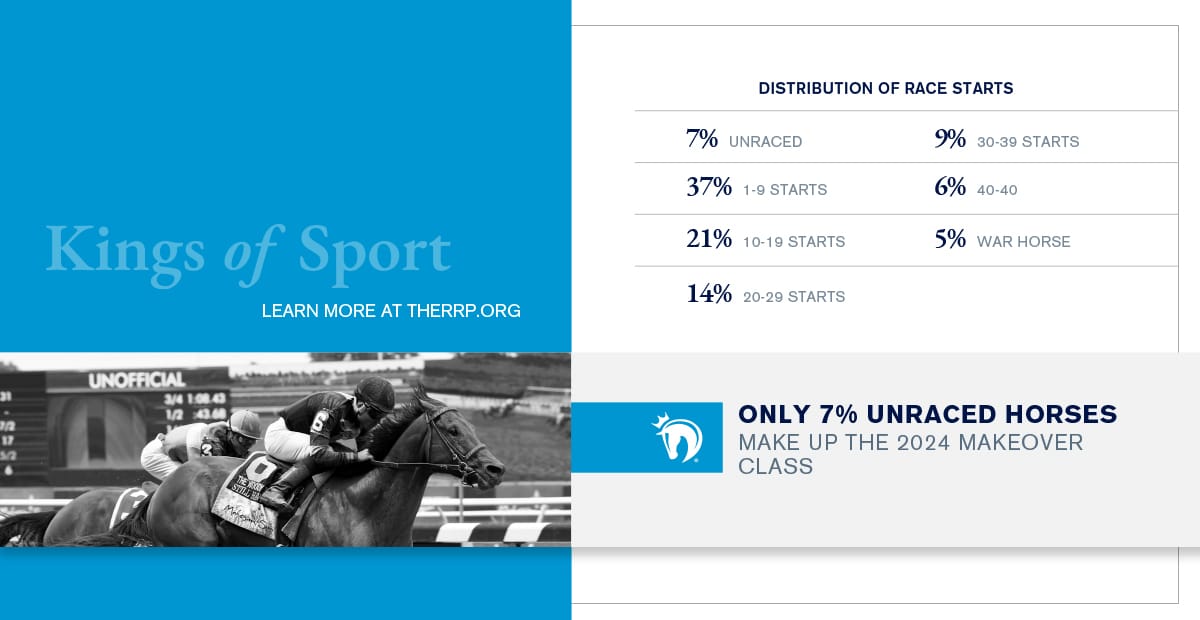
Warhorses
While our number of warhorses (defined as those who make 50 or more starts) may be declining somewhat in recent years – we have 24 registered this year, down from 28 in 2023 and 36 in 2022 – we nonetheless enjoy celebrating the long careers of these campaigners! Here are our top ten warhorses with the most starts:
- King’s House: 119
- Algorix: 95
- Areyoutalkingtome: 94
- Long Station: 92
- C C’s Warrior: 89
- Flowers For Lisa: 88
- Over Ez: 75
- Calculated Thinkin, Check Six and Legal Gump: 70
Stakes Horses
Our annual contingent of former stakes horses reminds us that every racehorse needs an aftercare plan, and that the athleticism of the top caliber of Thoroughbreds easily transfers to new sports. Here are the stakes horses whose names you might already recognize – come see them in person in their new roles at the 2024 Makeover!
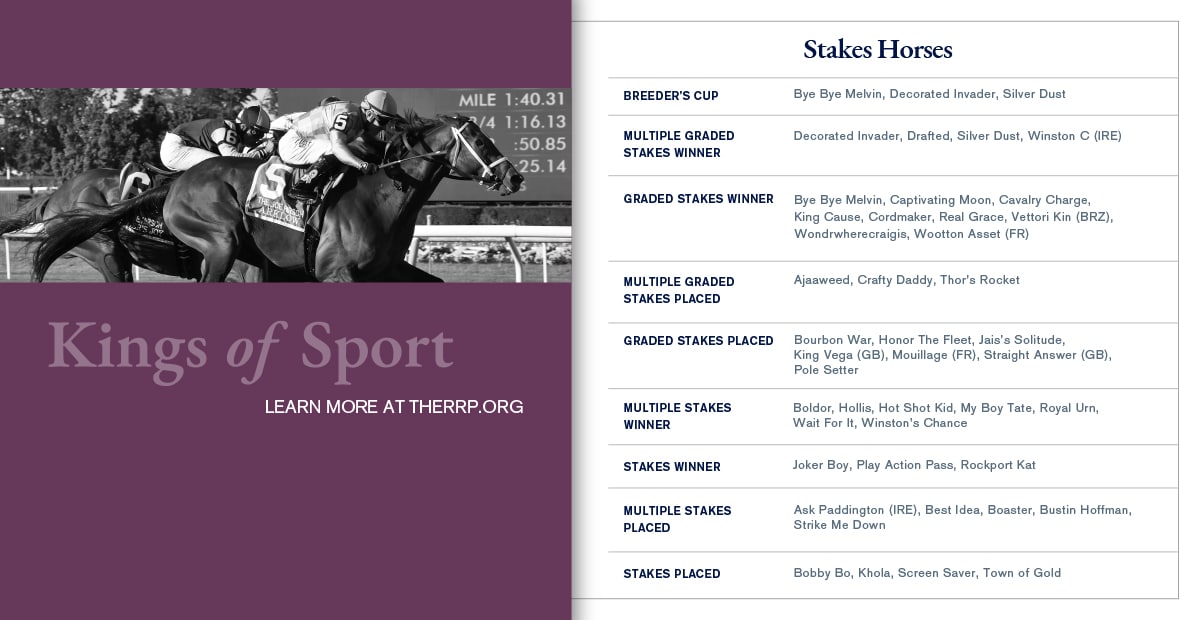
Broodmares
The Former Broodmare Division first ran as a pilot program in 2023, and is now a regular offering at the Thoroughbred Makeover to give recently-retired broodmares exiting the breeding industry the same opportunity to spotlight their trainability and athleticism as the retiring racehorses. This year’s broodmare class consists of 20 broodmares whose most recent reported cover or live foal was no earlier than the 2022 breeding season; the average age is 10 with the youngest mare age 5 and the oldest 17. The 2024 broodmare class collectively produced 53 reported live foals, with an average of three foals produced per mare.
Breeding & Sales
While the Thoroughbreds at the Makeover were first bred to race, the decisions made by breeders today are in some way shaping the future of the breed in sport tomorrow. Here’s a closer look at how breeding industry trends become OTTB trends.
States Bred
Kentucky continues to lead the way with the most horses, having bred 41% of the Makeover class of 2024, but other influential states such as New York, Maryland and Florida are well-represented too.
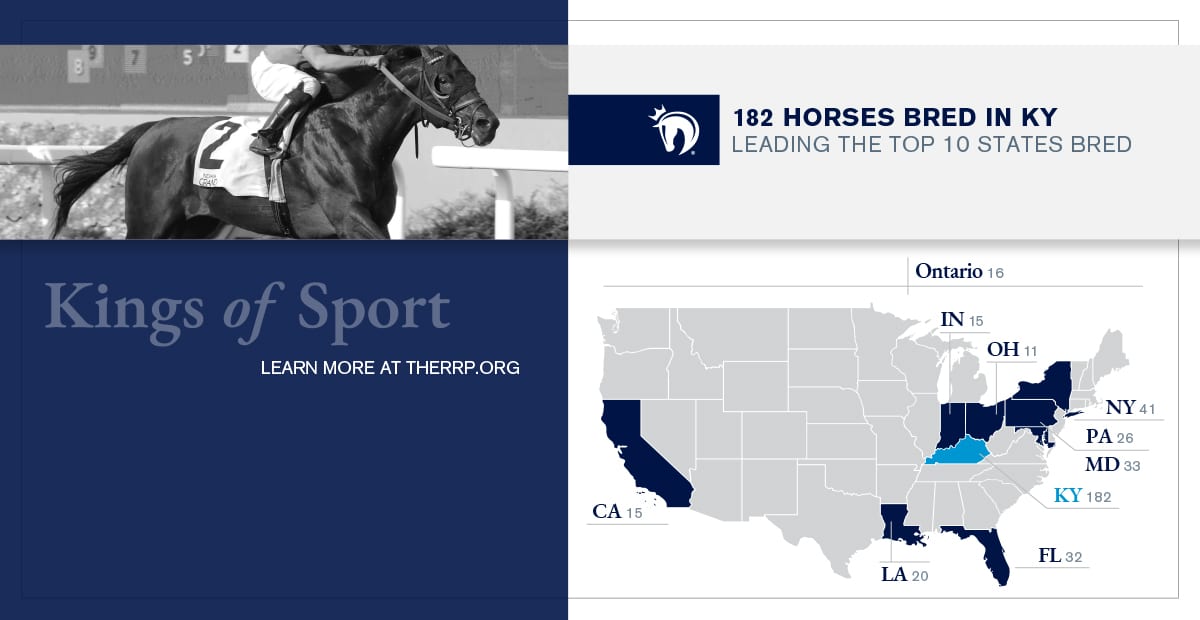
Sires Represented
While these stallions are of course influential on the development of the Thoroughbred as a racehorse, they’re also influential on the equestrian industry and how the OTTB is perceived as a sport horse: Makeover participants select their hopefuls based on their trainability and athleticism. These stallions represented by multiple Makeover entrants pass those qualities on to their offspring and create a fan base for that sire in the equestrian industry.
- Paynter and Honor Code: 6
- Curlin and Candy Ride (ARG): 5
- Cairo Prince, Frosted, Madefromlucky, Mineshaft, Munnings, Overanalyze, Uncle Mo, Race Day, Shackleford, Speightstown, Tapit, Warrior’s Reward: 4
The leading industry sires are well-represented as well: here are the top sires as of early August and their Makeover-registered offspring.
- Into Mischief: Whiskey Mischief
- Mineshaft: Delawana Princess, Enzos World, Fox Red, Real Grace
- Gun Runner: Carmie’s Army
- Quality Road: Egoli
- Justify: Just So, Illustrated
- Goldencents: Brook Is Golden, Digital Soldier, Golden Dollar
- Constitution: Ranting, War Room
- Uncle Mo: Bye Bye Melvin, Tio Gato, Trending, Ultimate Value
- Curlin: Ajaaweed, Cordmaker, Higginson, Intimidation, Plamen
- Practical Joke: Joker Boy
Siblings
There are no full siblings competing this year, but we do have four pairs of half siblings registered. These broodmares should be very proud!
- Betty’s Chance: Winston’s Chance (2013) and Honest Chance (2019)
- Discreet Lady: Alphalfa (2016) and Social Sidekick (2020)
- DJ Trip: What A Beaut (2016) and Bryton’s DJ (2018)
- Free Strike: Justa Scoch (2014) and Grace N Favor (2017)
Sales History
Out of the class of 2024, 43% of the total horses registered went through a bloodstock sale at least once – that’s 191 individual horses, for a total of 278 sale entries. Keeneland commanded 95 of those sale entries, representing over $7 million in total sales with an average price of $74,330; Fasig Tipton was close behind with 83 sale entries, $5.9 million in total sales and an average price of $71,297.
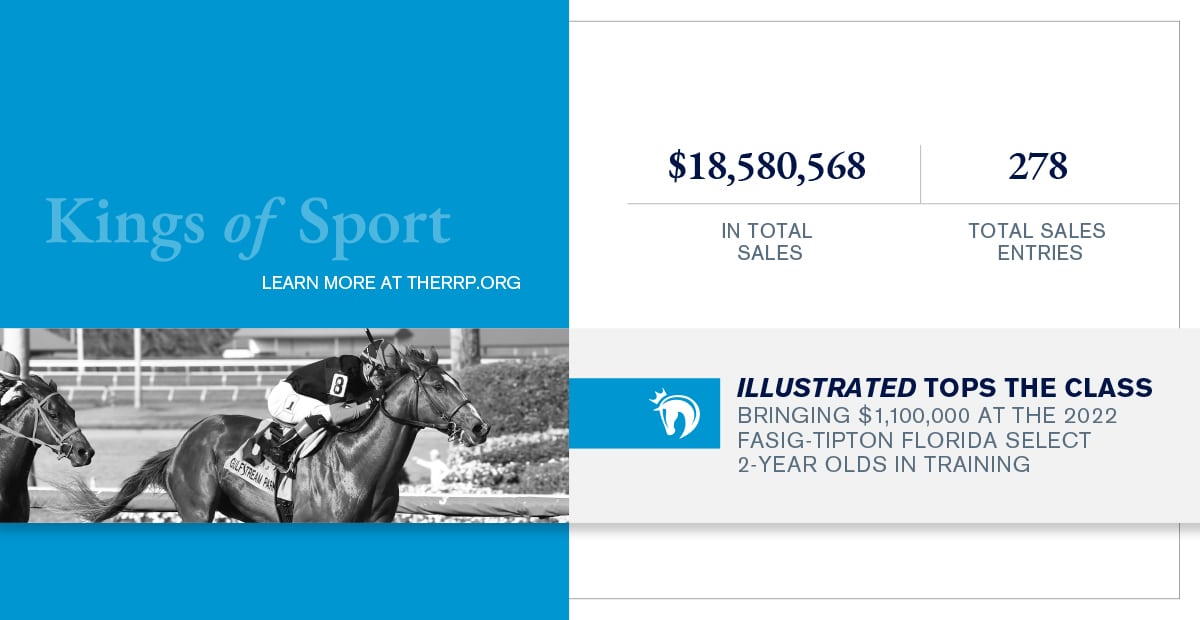
Demographics
There is no such thing as a typical Makeover horse, as indicated by the statistics above: horses from every aspect of the racing industry will be represented. We’ll see graded stakes winners and those who never made a start; horses who commanded seven-figure bids at the bloodstock sales to those who raced for their breeders at a regional track. There will be warhorses and horses who retired after just one start, and everything in between.
That said, let’s look at the average demographics of the Makeover class of 2024!

Take a look at the full entry list here. We look forward to seeing you at the 2024 Thoroughbred Makeover and National Symposium, presented by Thoroughbred Charities of America, October 9-12 at the Kentucky Horse Park!

